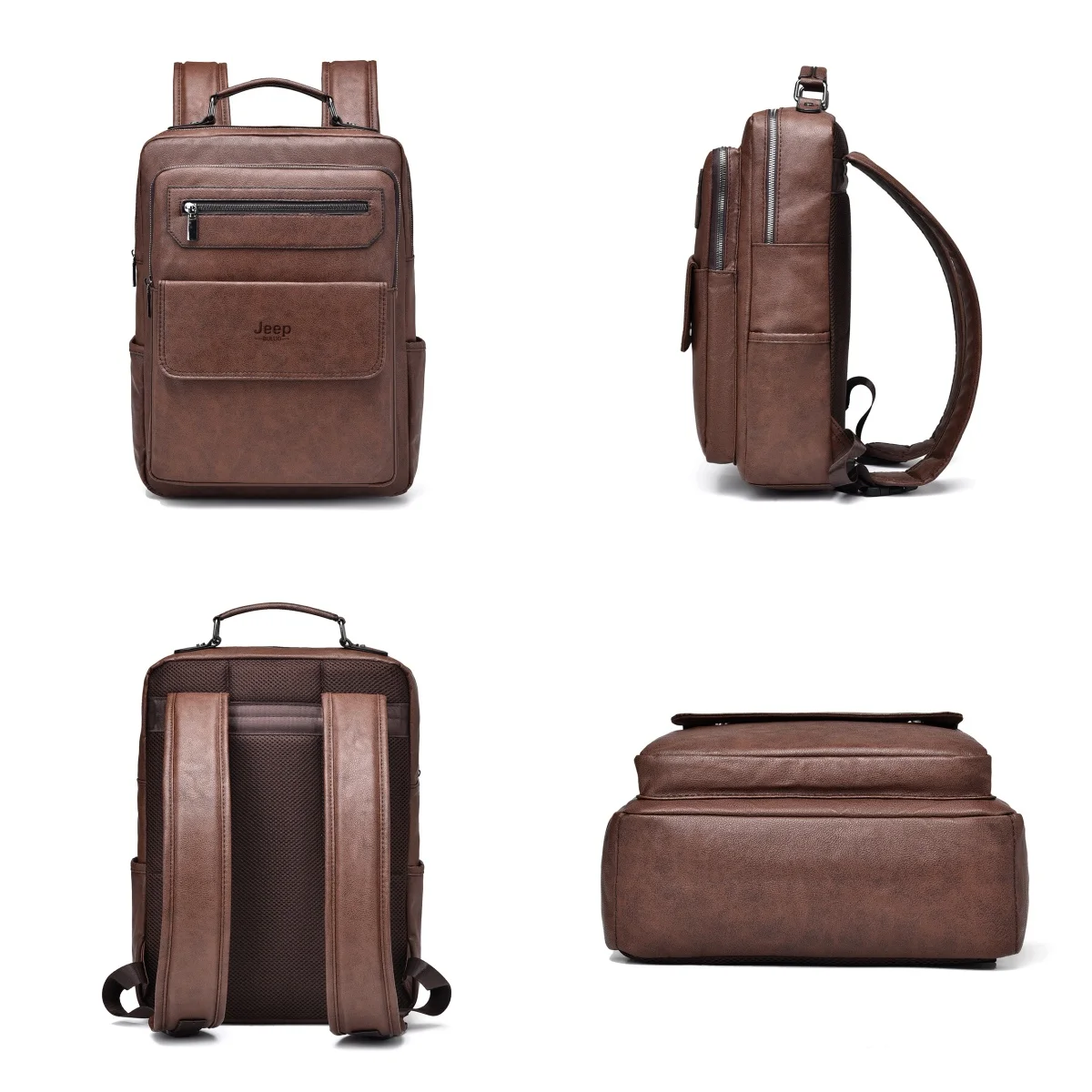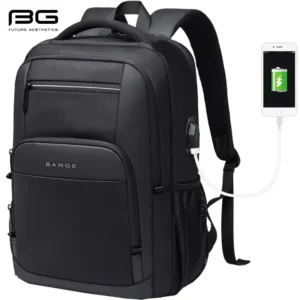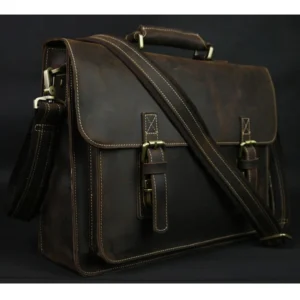Understanding Backpack Volume Measurements
When shopping for a backpack, you’ll notice most are measured in liters. But what does that actually mean for your daily needs? Simply put, backpack volume tells you how much stuff you can fit inside. The liter measurement is a standard way to understand capacity—think of it this way: a 1-liter water bottle takes up approximately 1 liter of space in your backpack.
It’s important to understand that manufacturers measure volume differently. Some count only the main compartment, while others include all pockets and compartments. This means two 20-liter backpacks might not hold the same amount of items.
There’s also a difference between “stated capacity” and “usable space.” A backpack might be listed as 25 liters, but oddly shaped compartments or poor design can reduce what you can actually fit inside. Understanding these measurements is essential because choosing the right volume directly impacts your daily comfort and efficiency.
Key points to remember:
* Liters (L) are the standard measurement for backpack volume
* Total volume includes main compartment plus all pockets
* Usable space may differ from stated capacity due to design
* Shape and organization affect how efficiently you can use the available space
Understanding backpack measurements is the first step before considering other aspects of your purchase, such as material care and protection.
How to Assess Your Daily Carry Requirements
Before deciding on a backpack volume, you need to understand exactly what you carry every day. Start by gathering everything you typically bring with you and evaluating how much space each item requires.
Create a detailed inventory of your daily essentials. Lay everything out on a table and group similar items. This visual inventory helps you understand your true space needs rather than guessing. Consider items like:
- 15” laptop (~2-3L)
- Standard water bottle (0.5-1L)
- Lunch container (1-2L)
- Light jacket or sweater (2-3L)
- Gym clothes (2-3L)
- Books or notebooks (~0.5-1L each)
Don’t forget to account for seasonal variations. You might need extra space in winter for a heavier coat or rain gear, while summer might require less. Also consider occasional items you might carry once or twice a week—like gym clothes on workout days or special equipment for hobbies.
Remember that the way you commute affects your carrying needs too. Cycling might require rain gear and a change of clothes, while driving might mean you can leave some items in your vehicle.
Self-Assessment Checklist:
1. List all items you carry daily
2. Measure or estimate each item’s volume
3. Identify which items are occasional vs. everyday
4. Consider seasonal variations
5. Account for your commute style
6. Think about comfort and accessibility
Properly assessing your daily carry requirements gives you a realistic picture of the volume you need before comparing available options.
Small Volume Backpacks (10-15 Liters): The Minimalist Approach
Small volume backpacks represent the minimalist approach to daily carry. These compact companions ranging from 10-15 liters are perfect for those who value mobility and simplicity over carrying capacity.
At this size range, a backpack comfortably fits:
* 13” laptop or tablet
* Small notebook or planner
* Compact umbrella
* Water bottle (16-20 oz/500-600 ml)
* Small accessories (wallet, keys, earbuds)
* Phone charger and minimal tech accessories
These backpacks excel in urban environments where agility matters. They’re ideal for navigating crowded public transportation, bicycle commuting, or walking through busy city streets. The compact size keeps the weight close to your body, reducing strain during extended wear.
Best suited for:
* Light office commuting without lunch
* Coffee shop work sessions
* Quick errands around town
* Minimalist lifestyles
* Short day trips in temperate weather
The primary advantage of this size is forcing intentionality about what you carry. Without extra space, you’ll pack only what you truly need, avoiding the “just in case” items that add unnecessary weight and bulk.
However, limitations exist. These packs offer minimal flexibility for unexpected items or purchases made during the day. You’ll need to carefully consider weather changes since there’s little room for extra layers. And if your day includes a gym session or after-work event, you might need a separate bag.
Small volume backpacks are perfect for those embracing minimalism, provided you’ve accurately assessed your daily essentials and confirmed they fit within this compact footprint.
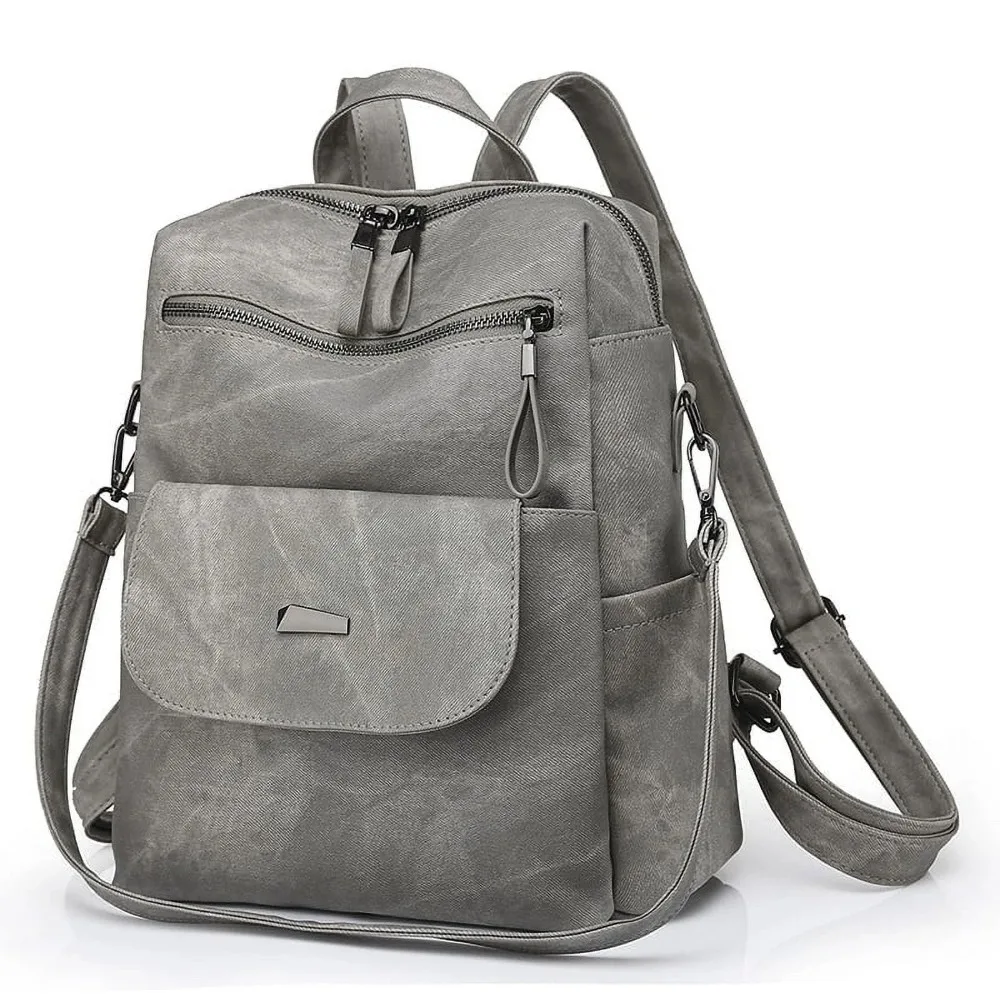
Medium Volume Backpacks (16-25 Liters): The Versatile Sweet Spot
Medium volume backpacks (16-25 liters) represent the “goldilocks zone” for most daily users—not too big, not too small, but just right. This range offers remarkable versatility while maintaining a manageable profile that works in professional settings and casual environments alike.
Within this category, there are noticeable differences between the lower (16-20L) and upper (21-25L) ranges. The lower range maintains a sleek profile while offering significantly more space than minimalist options. The upper range provides substantial carrying capacity while still appearing appropriately sized for daily use.
A typical 20-liter backpack comfortably accommodates:
Work Professional Configuration:
* 15” laptop in padded sleeve
* Full-size notebook and documents folder
* Lunch container
* Water bottle
* Light jacket or sweater
* Tech accessories (charger, mouse, headphones)
* Small personal items
Student Configuration:
* Laptop or tablet
* 2-3 textbooks
* Notebook and writing supplies
* Water bottle and snacks
* Portable power bank
* Light jacket
* Small personal items
Active Commuter Configuration:
* Laptop and work essentials
* Compact gym clothes
* Small towel
* Water bottle
* Snacks
* Basic toiletries
* Phone and accessories
The beauty of this volume range lies in its adaptability. You’ll have room for daily essentials plus the flexibility to accommodate unexpected items or purchases made throughout the day. The space is sufficient without encouraging overpacking or becoming cumbersome during commuting.
Medium volume backpacks typically provide ideal organization for laptops and daily essentials, striking the perfect balance between carrying capacity and comfortable mobility for most users.
Large Volume Backpacks (26-35 Liters): For Heavy Haulers
Large volume backpacks (26-35 liters) are designed for those whose daily needs extend beyond the basics. These substantial carriers offer capacity comparable to a small weekend bag or carry-on suitcase, making them suitable for complex daily routines that involve multiple activities or environments.
These larger backpacks excel in specific scenarios:
Creative Professional Setup:
* Pro-level laptop and tablet
* Camera body with 1-2 lenses
* Portable drawing tablet
* External hard drives
* Reference materials
* Full-size headphones
* Portfolio materials or samples
Parent’s Daily Carry:
* Work essentials (laptop, documents)
* Children’s items (snacks, small toys, extra clothing)
* Water bottles for multiple people
* First-aid basics
* Packable rain gear for the family
* Larger lunch containers
Bike Commuter with Complete Change:
* Work clothes (including shoes) in separate compartment
* Full-size laptop and accessories
* Substantial lunch and snacks
* Repair kit and safety gear
* Toiletry kit for freshening up
* Water bottle and travel mug
While these backpacks offer tremendous versatility, they come with considerations. The extra volume can tempt you to pack items “just in case,” leading to unnecessary weight. The larger size also requires more thoughtful organization to prevent smaller items from getting lost in the depths of your bag.
The challenge with larger backpacks is maintaining discipline about what you carry. Just because you can fit more doesn’t mean you should. Effective organization becomes even more critical at this volume—compartments, dividers, and dedicated pockets help manage the increased space efficiently.
Large volume backpacks provide ample space for those with substantial daily carrying requirements, offering room for complete outfit changes, extensive tech setups, or family essentials.
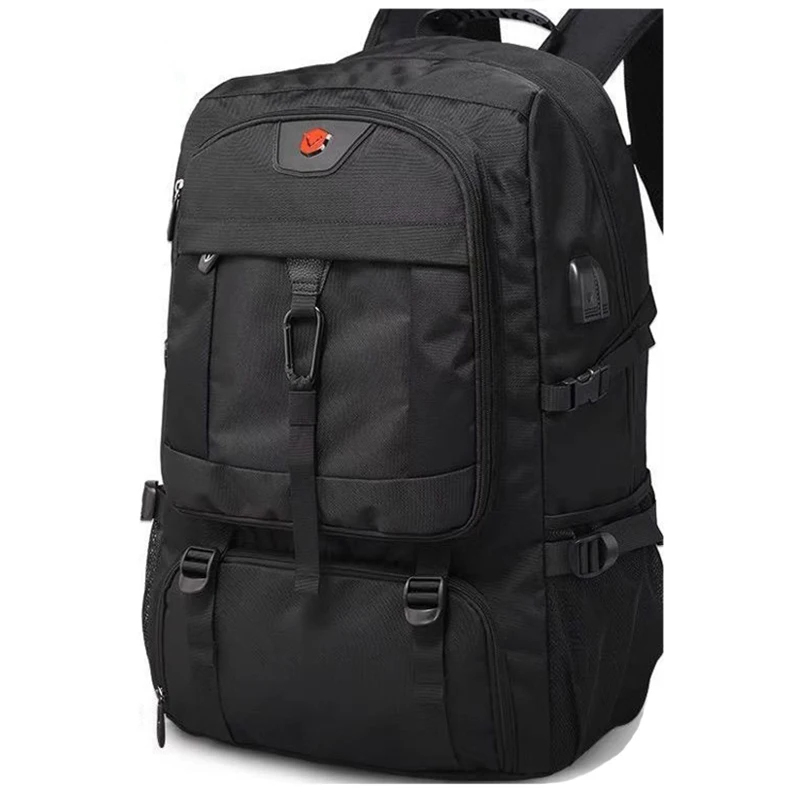
The Critical Role of Backpack Organization Features
The volume measurement tells only part of the story. How that space is organized dramatically affects how functional a backpack feels in daily use. Well-designed organization can make a smaller backpack more useful than a larger one with poor layout.
Internal organization transforms raw volume into practical space. Consider how compartmentalization affects usability:
- Dedicated laptop compartment: Protects your device while making it easily accessible without disturbing other contents
- Admin panel: Small pockets for pens, cards, and frequently accessed items prevent these from getting lost
- Water bottle pockets: External placement keeps liquids separate from electronics while remaining accessible
- Quick-access pockets: Top or front pockets for items needed without opening the main compartment
- Hidden security pockets: Secure storage for valuables against your back, away from potential theft
The difference between minimal and optimal organization becomes clear when comparing features:
| Basic Organization | Optimal Organization |
|---|---|
| Simple laptop sleeve | Suspended laptop system with padding |
| Single main compartment | Thoughtful divisions for different items |
| Basic outer pockets | Quick-access pockets with water-resistant zippers |
| Standard zippers | Water-resistant zippers with easy-grip pulls |
| Basic straps | Adjustable load lifters and sternum strap |
Effective organization means you can access what you need without unpacking everything else. It means protecting delicate items while keeping frequently used ones readily available. Most importantly, good organization transforms volume measurements from abstract numbers into practical, usable space.
Organization features significantly impact the functionality of your backpack regardless of volume, often making the difference between a frustrating daily experience and a seamless one.
Comfort Factors Beyond Pure Volume
While volume determines how much you can carry, multiple factors affect how comfortable that load feels on your back. A properly designed 25L backpack might feel more comfortable than a poorly designed 15L model, even when both are fully loaded.
Weight distribution plays a crucial role in perceived comfort. A backpack that holds weight close to your back and centered between your shoulders will feel lighter than one where weight shifts or pulls away from your body. This is why backpack dimensions—not just volume—matter significantly.
Key comfort considerations include:
- Back panel design: Contoured panels that follow your spine’s natural curve distribute weight evenly
- Strap construction: Wide, padded straps spread pressure across your shoulders instead of creating pressure points
- Sternum strap: Prevents shoulder straps from sliding outward, stabilizing the load
- Load lifters: Small straps at the top of shoulder straps that pull the pack closer to your upper back
- Ventilation systems: Reduce sweating and discomfort during extended wear
The relationship between backpack shape and comfort is often overlooked. A tall, slim profile keeps weight centered on your spine, while a wide, short design may cause the load to shift side-to-side during movement. Similarly, a deep backpack that extends far from your back creates leverage that increases perceived weight.
Material weight contributes significantly to comfort—before you even add any contents. Premium leather offers durability and classic appeal but weighs more than modern synthetic materials. Consider your total carrying needs when evaluating material weight.
Understanding how to wear your backpack properly is directly related to preventing discomfort and back pain, regardless of the volume you choose. Proper adjustment of straps and positioning can make even a heavier load feel manageable.
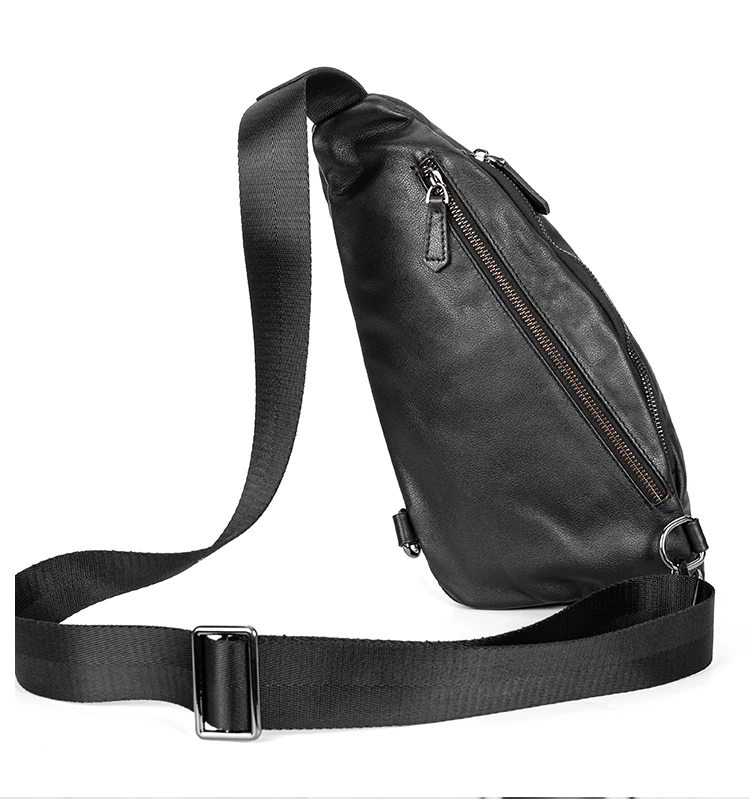
Material and Durability Considerations
The materials used in your backpack affect not just appearance but also weight, durability, and functionality. When considering volume, remember that different materials have different weights—meaning the same volume backpack could feel substantially different depending on construction.
| Material | Weight | Durability | Weather Resistance | Aging Characteristics |
|---|---|---|---|---|
| Full-grain leather | Heavier | Excellent | Good with proper care | Develops rich patina |
| Ballistic nylon | Medium | Very high | Excellent | Maintains appearance |
| Waxed canvas | Medium-heavy | High | Very good | Develops character |
| Recycled synthetics | Light | Variable | Variable | Minimal change |
Premium materials often justify their cost through longevity. A quality leather backpack might cost more initially but can last decades with proper care, while cheaper options might need replacement after a year or two of daily use. This durability factor becomes especially important for daily carry items that face constant use.
Weather protection varies significantly between materials. Some naturally repel water, while others require additional treatment. Consider your local climate and typical commuting conditions when evaluating material options.
Each material comes with specific maintenance requirements:
* Leather needs occasional conditioning to prevent drying and cracking
* Canvas may require rewaxing to maintain water resistance
* Synthetic materials often need less maintenance but might show wear differently
Proper conditioning extends the life of leather backpacks regardless of their volume, while understanding leather quality differences directly impacts backpack durability and functionality over time.
Balancing Aesthetics with Functionality
A backpack is both a practical tool and a style statement. The ideal daily carry solution balances visual appeal with functional design, complementing your personal style while meeting your carrying needs.
Different environments call for different aesthetic approaches:
Professional Settings:
* Clean lines and minimal external hardware
* Structured shape that maintains form even when not full
* Subtle, sophisticated color options
* Limited visible branding
* High-quality materials that convey professionalism
Academic Environments:
* Durable construction that withstands heavy books
* Comfortable carrying features for long days
* Practical organization for various supplies
* Design that transitions between classes and social settings
* Resistant to stains and easy to clean
Creative Workplaces:
* Distinctive design that expresses personality
* Versatile features for varying equipment needs
* Materials that develop character over time
* Balance between unique appearance and professional credibility
* Adaptable to different creative contexts
Design elements significantly affect functionality. External straps and attachment points offer versatility but can snag on crowded public transportation. Hardware quality affects both appearance and durability—cheap plastic buckles may break under daily stress, while quality metal hardware ages gracefully.
Minimal design often maximizes functionality by reducing weight, eliminating potential failure points, and creating a timeless appearance that remains appropriate as trends change. This approach aligns with premium materials that develop character rather than wearing out.
Understanding different leather backpack styles helps balance aesthetics with functionality, ensuring your backpack remains appropriate for its intended environments while meeting your practical needs.
14 Inch Leather Laptop Backpack, Brown Leather Backpack, Men's Leather Backpack, Vintage Leather Backpack
Price range: $177.28 through $199.12 Select options This product has multiple variants. The options may be chosen on the product pageDesigner Men's Backpack, Men's Leather Laptop Backpack, Men's Leather Work Backpack
Price range: $158.04 through $160.04 Select options This product has multiple variants. The options may be chosen on the product pageDesigner Mini Backpack, Mini Leather Backpack, Small Leather Sling Backpack, Women's Leather Backpack
Price range: $95.76 through $98.80 Select options This product has multiple variants. The options may be chosen on the product pageDesigner Mini Backpack, Designer Women's Backpack, Mini Leather Backpack, Women's Leather Backpack
Price range: $135.92 through $137.64 Select options This product has multiple variants. The options may be chosen on the product page15 Inch Leather Laptop Backpack, Leather Briefcase Backpack
$332.96 Select options This product has multiple variants. The options may be chosen on the product page17 Inch Leather Laptop Backpack, Men's Leather Travel Backpack, Men's Leather Work Backpack
Price range: $106.28 through $143.88 Select options This product has multiple variants. The options may be chosen on the product page
Common Mistakes When Choosing Backpack Volume
Avoiding common volume selection mistakes can save you from backpack regret. These pitfalls affect comfort, functionality, and ultimately lead to premature replacement.
Overestimating Daily Needs
Many people buy backpacks that are too large “just in case.” This extra space encourages overpacking, increasing weight and strain. A backpack that’s rarely more than 60-70% full indicates you’ve chosen excessive volume.
Solution: Focus on what you carry 90% of the time, not exceptional situations. If you occasionally need extra capacity, consider lightweight packable bags as supplements.
Underestimating Occasional Items
Conversely, selecting a backpack that fits only your absolute minimum essentials creates stress when you need to carry anything extra—like a light jacket when weather changes or materials for an unexpected meeting.
Solution: Add 10-15% buffer space to your estimated needs to accommodate occasional items without significant bulk increase.
Prioritizing Maximum Capacity Over Comfort
Large volume backpacks that exceed your physical proportions or daily requirements lead to unnecessary strain and awkward carrying.
Solution: Select a backpack proportional to your body size and prioritize comfort features like padded straps and back panels over raw carrying capacity.
Ignoring Seasonal Variations
Your carrying needs likely change between seasons. Winter typically requires more volume for layers, while summer might need space for a water bottle and sunscreen.
Solution: Choose a volume that accommodates your most demanding season, with organization features that help the pack feel efficient when not filled to capacity.
Selecting Based on One-Time Use Case
Buying a backpack sized for a specific, infrequent scenario (like an occasional business trip) often results in a bag that’s impractical for daily use.
Solution: Purchase for your regular daily needs, and consider specialized solutions for occasional requirements.
Proper waterproofing for your leather bag helps protect your investment regardless of the backpack volume you choose, ensuring longevity through changing conditions and seasons.
Should You Choose a Smaller or Larger Volume? (Decision Framework)
Making the final volume decision requires balancing multiple factors. This framework guides you through the process systematically:
Step 1: Establish Your Core Daily Load
List everything you carry at least 4 days per week. These items form your non-negotiable base requirements.
Step 2: Measure Your Flexibility Requirements
Consider how often your carrying needs vary:
* If you carry variable loads → prioritize expandable features or adjustable compression
* If your commute involves multiple transportation modes → emphasize comfort over maximum capacity
* If you frequently transition between environments → select a volume appropriate for the most formal setting
* If you often carry technology → ensure protective features regardless of volume
Step 3: Evaluate Your Physical Considerations
* Your body proportions affect comfortable carrying capacity
* Existing back or shoulder issues may limit appropriate volume
* Consider your typical walking distance with the backpack fully loaded
Step 4: Apply User Profile Guidelines
For Minimalist Professionals:
* Recommended volume: 12-18L
* Priority features: Premium organization, device protection, professional aesthetics
* Look for: Padded laptop compartment, quick-access pockets, clean design
For Active Urban Commuters:
* Recommended volume: 18-24L
* Priority features: Versatile compartments, comfortable carrying systems, weather resistance
* Look for: Separate compartments for work/gym gear, ventilated back panel
For Heavy-Duty Daily Carriers:
* Recommended volume: 24-30L
* Priority features: Ergonomic design, substantial organization, durability
* Look for: Padded shoulder straps, sternum strap, multiple compartments
Remember that convertible backpacks offer volume flexibility for varying daily needs, potentially bridging the gap between different carrying requirements.
Can a Backpack Be Too Small for Daily Use?
Yes, a backpack can definitely be too small, creating frustration and potentially damaging your belongings. Recognizing the signs early helps prevent issues:
Warning Signs Your Backpack Is Too Small:
Straining closures: Zippers that won’t close easily or buckles that barely fasten indicate insufficient volume. This stress shortens your backpack’s lifespan and risks damage to contents.
Difficult access: When retrieving one item requires removing multiple others, your backpack is likely too small. This daily frustration costs time and increases the risk of forgetting items when repacking.
Compressed contents: Crushed lunch containers, bent papers, or creased clothing reveal inadequate space. Beyond the immediate inconvenience, this compression can permanently damage electronics and other sensitive items.
Regular overflow: Consistently carrying additional bags or items in hand suggests your backpack can’t meet your true needs. This defeats the purpose of having a backpack in the first place.
Visible stress points: Seams showing white stress marks or stretching indicate the backpack is routinely overfilled, accelerating wear and potentially leading to failure at the worst moment.
When you notice these signs consistently, it’s time to consider sizing up to avoid damaging both your backpack and its contents.
How Does Backpack Volume Affect Posture and Comfort?
Backpack volume directly influences posture, comfort, and potentially long-term physical health. The relationship goes beyond simple weight—it involves balance, weight distribution, and carrying techniques.
Larger volume backpacks, when fully loaded, place more stress on your shoulders and back. This increased load can pull your posture out of alignment, causing you to lean forward to counterbalance the weight. Over time, this compensation can contribute to back, neck, and shoulder discomfort.
However, proper loading technique matters more than absolute volume. Health professionals recommend:
Position heavy items closest to your back: This keeps the center of gravity close to your body, reducing strain regardless of total volume.
Limit weight to 10-15% of body weight: A 150-pound person should aim to carry no more than 15-22 pounds daily, regardless of backpack size.
Use both shoulder straps properly adjusted: Even with smaller volumes, wearing your backpack on one shoulder creates imbalanced muscle development and strain.
Position the backpack properly: The bottom should rest in the curve of your lower back, not sagging below your waistline.
Backpack shape affects posture as much as volume. Tall, narrow packs keep weight centered on your spine, while wide packs can cause side-to-side swaying that stresses your back muscles differently.
Understanding backpack weight management is crucial for comfortable daily carry, helping you maintain good posture regardless of your chosen volume.
What’s the Ideal Backpack Volume for Someone Who Works in Different Locations?
Mobile professionals face unique challenges when selecting backpack volume. Working across multiple locations—whether client sites, coffee shops, or co-working spaces—requires a solution that adapts to varying environments while maintaining professional appearance.
For most mobile professionals, the 18-25 liter range offers optimal versatility. This volume provides sufficient space for technology and documents while remaining appropriate in professional settings. Look specifically for:
Adaptability Features:
* Expandable compartments that grow when needed and compress when not
* Removable organizer pouches that can be swapped based on daily requirements
* External attachment points for occasional larger items
* Compression straps to maintain a slim profile when partially filled
Quick-Access Design:
* Multiple entry points to different compartments
* Laptop access without opening the main compartment
* Dedicated quick-grab pockets for frequently needed items
* Organization that allows setup in tight spaces like coffee shops
Environmental Transitions:
* Weather-resistant materials or included rain cover
* Professional appearance that fits corporate environments
* Comfortable carrying features for variable commuting methods
* Secure anti-theft features for public workspaces
The ideal solution balances professional aesthetics with practical functionality. Premium materials like leather offer a sophisticated appearance while providing durability for daily transitions between environments. Features like padded laptop compartments protect valuable technology during frequent movement.
Summit Carry’s leather backpacks excel in this category, offering sophisticated designs with thoughtful organization specifically crafted for professionals who work across multiple locations throughout the week.

